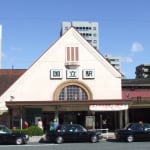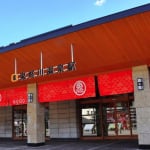Name: Golden Roof / Goldenes Dachl
Address: Herzog-Friedrich-Strasse 15, A-6020 Innsbruck
Official/Related Website URL: https://www.innsbruck.gv.at/page.cfm?vpath=bildung--kultur/stadtmuseen--stadtgalerie/museum-goldenes-dachl
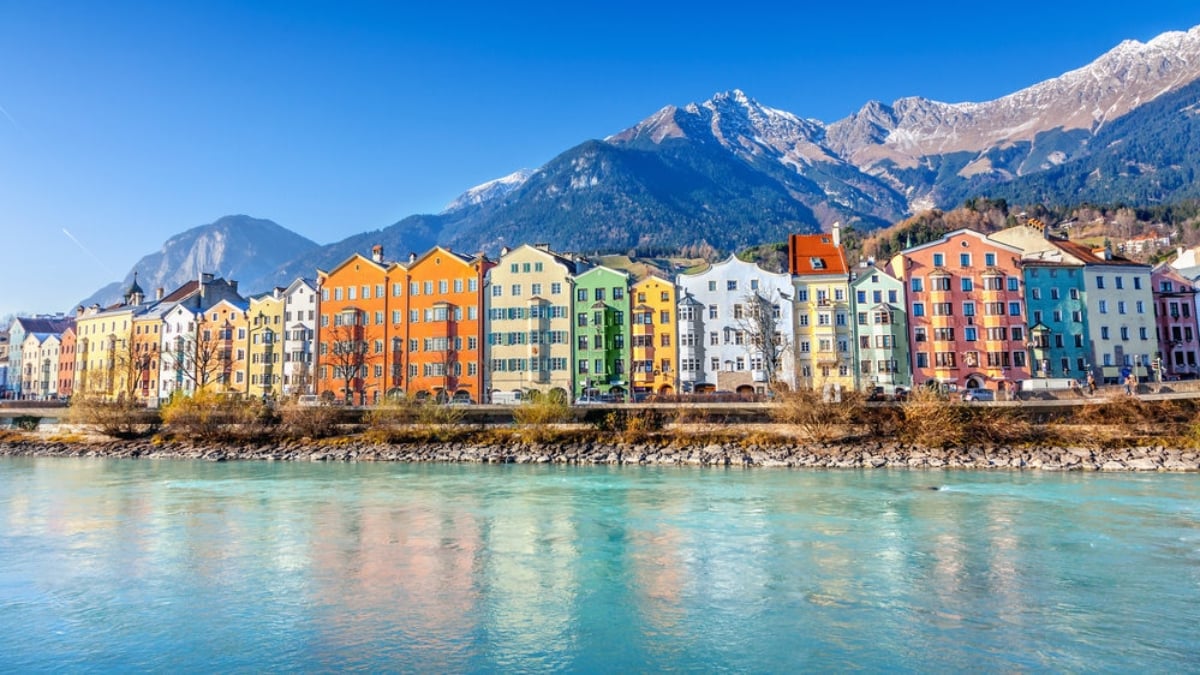
20 must-see attractions in the historic city of Innsbruck loved by Empress Maria Theresa
Austria’s Innsbruck. The name means “bridge over the Inn River.” Located close to Munich in Germany to the north and Bolzano in Italy to the south, it flourished as an intermediary trading city. In the 14th century, it came under the rule of the Habsburgs and became known as a city beloved by both Holy Roman Emperor Maximilian I and Empress Maria Theresa. You can enjoy many sightseeing spots reminiscent of the Middle Ages, including numerous Gothic-style buildings and Renaissance-style sites influenced by Italy. Said to be the birthplace of the waltz, it's also a romantic city where you can enjoy balls and opera along with sightseeing.
Innsbruck, with its high elevation and distance from the coast, is ideal for winter sports, and is famous as a two-time host of the Winter Olympics. In summer, it is favored by hiking enthusiasts, with many visitors coming to enjoy authentic mountain walks and the unspoiled nature. It is the most popular city in the state of Tyrol, attracting tourists year-round. Enjoy the full charm of sightseeing in Innsbruck!
table of contents
[x] close
20 must-see attractions in the historic city of Innsbruck loved by Empress Maria Theresa
- 1. Golden Roof
- 2. City Tower
- 3. Court Church
- 4. Imperial Palace
- 5. St. Jacob's Cathedral
- 6. Maria Theresa Street and Old Town
- 7. St. Anne’s Column
- 8. Triumphal Arch
- 9. Inn River and Inn Bridge
- 10. Helbling House
- 11. Tyrolean State Museum
- 12. Ambras Castle
- 13. Swarovski Crystal Worlds
- 14. Hafelekar Observation Deck
- 15. Bergisel Ski Jump
- 16. Hungerburg Station
- 17. Alpenzoo
- 18. Court Garden
- 19. Zeughaus
- 20. Leopold Fountain and Rudolf Fountain
- ◎ Summary
1. Golden Roof

The “Golden Roof,” said to be Innsbruck’s number one tourist attraction, is a so-called royal box remodeled by Holy Roman Emperor Maximilian I, who inherited the County of Tyrol. It was created so he could watch festivals and tournaments held at the central square of the Old Town from a five-story building.
Originally built as the residence of the lord of Tyrol, Emperor Maximilian I later added the viewing balcony. In front of the balcony are six relief panels: the two in the center depict Maximilian I with his first and second wives, while the outer four portray a dance motif called “Moresca.” Completed in 1500 to celebrate Maximilian I’s marriage, the balcony roof is covered with 2,657 gold-plated copper tiles. Its dazzling brilliance is so striking that even first-time visitors can’t help but stop and admire it.
For the four weeks leading up to Christmas every year, a Christmas tree is decorated in the square in front of the Golden Roof, adding charm to the Christmas market and delighting tourists during the festive season. The building’s interior is a museum, showcasing Maximilian I’s treasures, portraits, medals, and goldsmith works.
2. City Tower
Located in the center of Innsbruck, Austria, the City Tower is 57 meters tall. From here, you can overlook the streets of Innsbruck below and the mountains of Tyrol in the distance. Built in the mid-14th century as a watchtower for the Old Town Hall, it was later remodeled in the mid-16th century with a double copper dome, and a clock was added in the 17th century. There is an observation deck around 33 meters up. With 148 steps to the top, those confident in their physical fitness should definitely give it a try!
From this central tower in Innsbruck, you can see the colorful houses of Innsbruck, the Old Town, Maria Theresa Street, various historic buildings, and—if the weather is good—even the Bergisel Ski Jump, which is famous for its form and prominence. Enjoy a 360-degree panoramic view of all the city's landmarks!
Name: City Tower / Stadtturm
Address: Herzog-Friedrich-strasse, 21, 6020, Innsbruck
Official/Related Website URL: http://countrymusichalloffame.org/
3. Court Church
A major tourist attraction in the center of Innsbruck, the “Court Church” was built by Emperor Ferdinand I to fulfill the wishes of Holy Roman Emperor Maximilian I as his mausoleum. It is known as a Gothic-style church and a masterpiece of German Renaissance architecture. Although modest in exterior, the interior exudes solemn grandeur. Around the central altar stand 28 life-sized bronze statues known as the “Black Men (Companions).” The church also houses the grave of Andreas Hofer, a Tyrolean hero who defended the peasants' army—an emotionally powerful spot.
The central altar holds a black sarcophagus with 24 reliefs, intended to be Maximilian I’s final resting place. However, due to opposition from local citizens at the time, his body was never entombed here, leaving the coffin empty. The church’s pipe organ remains completely intact and is the largest in Austria—counted among the five greatest organs in the world. With regular performances, visitors may have the chance to hear this extraordinary sonic heritage during their visit.
Name: Court Church (Hofkirche)
Address: Universitätsstraße 2, 6020 Innsbruck
Official/Related Website URL: http://www.tiroler-landesmuseen.at/page.cfm?vpath=haeuser/hofkirche/haus
4. Imperial Palace
Located in the heart of Innsbruck, Austria, the Imperial Palace began construction in 1460 under Archduke Sigismund the Rich, in the late Gothic style. Later, it was expanded and renovated by Emperor Maximilian I, Emperor Ferdinand I, and Empress Maria Theresa, who added grand halls, salons, and a chapel. In 1773, it was transformed into an opulent Rococo-style palace. It is also known as the wedding venue of Maria Theresa’s son, Leopold II, and Spanish princess Ludovica.
Though smaller and more modest in appearance compared to the Imperial Palace in Vienna, the Innsbruck Palace is full of highlights inside: the Giants’ Hall (Riesensaal) with Tyrol’s largest ceiling frescoes, chandeliers, a Rococo stove in the White Hall, the throne in the audience room of Maria Theresa, and royal portraits displayed in each room. A must-see attraction when visiting Innsbruck!
Name: Imperial Palace / Hofburg
Address: Rennweg 1, 6020 Innsbruck
Official/Related Website URL: http://www.hofburg-innsbruck.at/623/php/index.php
5. St. Jacob's Cathedral
At the center of tourism in Innsbruck, Austria, St. Jacob’s Cathedral is a Gothic church located behind the Imperial Palace. It was rebuilt between 1717 and 1724 by Johann Georg Fischer and Jakob Herkomer. Considered a forerunner of Gothic architecture, it is the spiritual heart of the Roman Catholic Church in Tyrol and a key place of worship for the people of the city.
The cathedral interior is decorated with vivid frescoes and ornate stucco inspired by plant motifs. These were crafted by the Asam brothers—masters of South German Baroque—with Cosmas Damian painting the ceiling frescoes and Egid Quirin creating the stucco decorations. Other highlights include “Our Lady of Succor,” a painting of the Virgin and Child by Lucas Cranach on the central altar, and the tombstone of Archduke Maximilian III created by Caspar Gras—both well worth seeing!
The pipe organ, said to be the most beautiful in Tyrol, along with the overall Baroque splendor, make this a rich and rewarding destination.
Name: St. Jacob’s Cathedral / Dom zu St. Jakob
Address: Domplatz 6, 6020 Innsbruck
Official/Related Website URL: https://www.innsbruck.info/infrastruktur/detail/infrastruktur/dom-zu-st-jakob-innsbruck.html
6. Maria Theresa Street and Old Town
This central boulevard in Innsbruck, named after Empress Maria Theresa who deeply loved the city, is a must-visit landmark for anyone touring Innsbruck. To the south of the street stands the Triumphal Arch, and beyond it, you can view the Bergisel Ski Jump. Looking through the arch, you can see the St. Anne’s Column and the distant Nordkette mountains—a panoramic view that captures the essence of the city.
The street is lined with historical buildings from the 17th and 18th centuries, including the former Provincial Government Office, the current City Hall, and the State Parliament Building. This main avenue exudes the unique atmosphere of Innsbruck. At its center stands the St. Anne’s Column, making the scenery even more iconic.
North of Maria Theresien Street is Herzog-Friedrich Street, which leads into the Old Town. On both sides of this street, you’ll find stone-arched ceilings known as Laubengänge and copper signs hanging over the storefronts—features that give the street its distinctive medieval charm. It’s a lively area lined with quaint shops and restaurants.
Name: Maria Theresien Street / Maria Theresien Strasse
Address: Maria-Theresien-Straße
Official/Related Website URL: https://www.innsbruck.info/en/facilities/details/infrastruktur/maria-theresien-strasse-innsbruck.html
7. St. Anne’s Column
A must-see during sightseeing in Innsbruck, this beautiful white marble monument stands along Maria Theresien Street. It was built in commemoration of the town’s victory over Bavarian troops who invaded during the War of Spanish Succession in 1703. The day of the victory happened to be St. Anne’s Day, giving the column its name.
At the top of the white marble pillar in the center of Maria Theresien Street stands the Virgin Mary, with angels below her, and four saints at the base. St. Anne faces toward Germany, symbolically repelling invaders. This white column, the colorful buildings lining the street, and the backdrop of the Nordkette mountains create a classic Innsbruck landscape that captivates visitors.
It’s also a relaxing spot where tourists can take a break during sightseeing or shopping along Maria Theresien or Herzog-Friedrich Street.
Name: St. Anne’s Column / Annasäule
Address: Maria-Theresien-Strasse 18, 6020 Innsbruck
Official/Related Website URL: https://www.innsbruck.info/infrastruktur/detail/infrastruktur/annasaeule-innsbruck.html
8. Triumphal Arch
Located at the southern end of Maria Theresien Street, this landmark was built in 1765 to commemorate the marriage of Empress Maria Theresa’s son, Leopold II, to Spanish Princess Ludovica. However, during construction, Maria Theresa’s husband, Franz I, suddenly passed away at the Imperial Palace in Innsbruck. As a result, the upper part of the arch features reliefs symbolizing “life and happiness” on the south side and “death and sorrow” on the north side. Reliefs of Maria Theresa adorn the pillars.
Looking through the arch from the outside, you’ll see Maria Theresien Street, St. Anne’s Column, and the Nordkette mountain range—all combining into one of Innsbruck’s most photogenic and popular tourist spots. Be sure to take a memorable photo here!
Name: Triumphal Arch / Triumphpforte
Address: Maria-Theresien-Strasse, 6020 Innsbruck
9. Inn River and Inn Bridge
Flowing through the heart of Innsbruck is the Inn River and the bridge that spans it—the Inn Bridge. While sightseeing in the city, a moment’s pause on the bridge reveals the serene beauty of the pale green river and the colorful streetscape, immersing you in the charm of this historic Tyrolean city.
The name “Innsbruck” comes from this river and bridge—"Inn" (the river) and "Bruck" (bridge)—highlighting the importance of the river, which flows through Switzerland, Austria, and Germany and served as a vital trade route in ancient times.
From the Inn Bridge, you can admire the town’s signature triangular-roofed houses adorned with vibrant flowers. Combined with the seasonal mountain backdrop, this creates a peaceful and picturesque scene. It’s hard to believe you’re in the middle of the city—an essential part of the Innsbruck experience. Be sure to visit the bridge that gave the city its name.
Name: Inn River and Inn Bridge
10. Helbling House
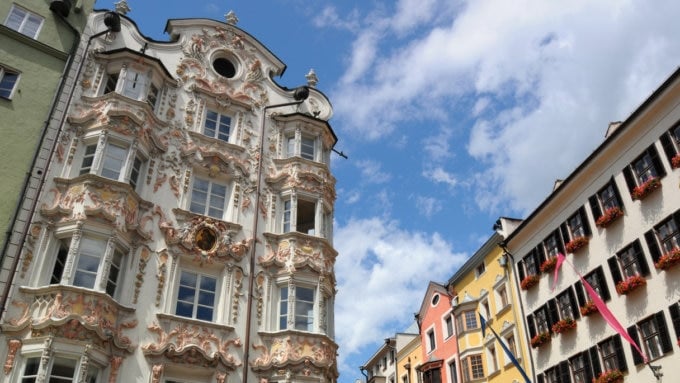
Standing in Innsbruck’s Old Town, the Helbling House was originally built in 1560 as a noble residence and later used as a Catholic meeting hall. In the mid-18th century, it was transformed by artists from the Wessobrunn School, who adorned the façade with ornate late Baroque stucco decorations. It’s now renowned as a masterpiece of late Baroque decoration.
Amid the row of late Gothic buildings that characterize Herzog-Friedrich Street, Helbling House stands out with its elegant Rococo motifs. It’s a glamorous tourist attraction that rivals even the nearby Golden Roof.
Name: Helbling House / Helblinghaus
Address: Herzog-Friedrich-Strasse 10, Innsbruck 6020
Official/Related Website URL: https://www.innsbruck.info/infrastruktur/detail/infrastruktur/helblinghaus-innsbruck.html
11. Tyrolean State Museum
Located in Innsbruck, Austria, the Tyrolean State Museum is a grand-scale institution housing artworks spanning over 30,000 years—from the Stone Age to the modern era. Its collection of Gothic paintings and sculptures is among the largest in Austria.
Representative items in the museum’s collection include the altar of Tyrol Castle, reliefs from the Golden Roof, paintings by Dutch masters like Rembrandt and Bruegel, and violins made by Jakob Stainer. The museum boasts an immense collection. In the Modern Gallery, you’ll find works by Egon Schiele, Oskar Kokoschka, Gustav Klimt, and Tyrolean artist Albin Egger-Lienz, making it a must-see for painting enthusiasts. Be sure to visit the Tyrolean State Museum when you’re in Innsbruck.
Name: Tyrolean State Museum / Tiroler Landesmuseum
Address: Museumstrasse 15, A-6020
Official/Related Website URL: http://www.tiroler-landesmuseen.at/page.cfm?vpath=index
12. Ambras Castle
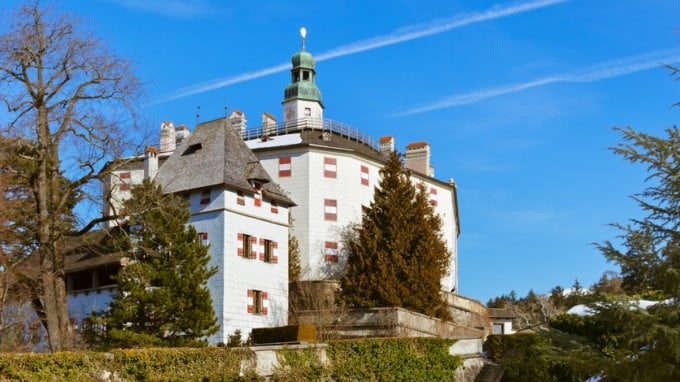
Standing on a hill in the outskirts of Innsbruck, Ambras Castle was built by Archduke Ferdinand II of Tyrol for his beloved wife and son. It was later expanded and remodeled into its current Renaissance-style form.
Just 4 kilometers from downtown Innsbruck, the beautiful castle offers stunning views of the entire city and the surrounding mountains—an ideal viewpoint. Highlights of the castle include a garden where peacocks roam freely, and the “Wunderkammer,” a chamber of curiosities where nobles once displayed rare and mysterious items. These collections, amassed with great wealth, laid the foundation for the collections of the Kunsthistorisches Museum in Vienna and the Habsburg family’s vast holdings.
Be sure to see the 43-meter-long Spanish Hall, the library, and the armory. Concerts held in the great hall are another special treat.
Name: Ambras Castle / Schloss Ambras
Address: Schloss Strasse 20, 6020 Innsbruck, Austria
Official/Related Website URL: http://www.schlossambras-innsbruck.at/
13. Swarovski Crystal Worlds
In 1995, on the occasion of Swarovski’s 100th anniversary, rather than looking back, the company launched a project for the future: Swarovski Crystal Worlds, located in the town of Wattens, 15 kilometers south of Innsbruck. Created by renowned Austrian artist André Heller, this unique facility has become one of Innsbruck’s leading tourist attractions.
Most of the exhibition space is underground, featuring the world’s largest and smallest crystals, walls made with 12 tons of crystal, and magical sound and light shows. The adjoining shopping area offers not only luxury items like Silver Crystal and Crystal Memories, but also reasonably priced, stylish accessories and innovative interior goods that fuse function with design. You’re sure to find the perfect souvenir from your visit to Innsbruck.
Although a bit outside the city, regular shuttle buses run from Innsbruck Station, making it easily accessible. Be sure to experience the wonder of Swarovski’s magical world!
Name: Swarovski Crystal Worlds / Swarovski Kristallwelten
Address: Kristallweltenstrasse 1, A-6112 Wattens, Austria
Official/Related Website URL: http://www.swarovski-kristallwelten.com
14. Hafelekar Observation Deck

The Nordkette mountain range rises to the north of Innsbruck, forming the city’s scenic backdrop. Located within it is the Hafelekar Observation Deck, at an altitude of 2,334 meters. From here, you can enjoy breathtaking views of both the Tyrolean Alps and the city of Innsbruck.
To reach the observation deck, take the modern Hungerburgbahn cable railway from Congress Station in Innsbruck to Hungerburg Station (elevation 868 m). From there, transfer to the Seegrube cable car to Seegrube Station (1,905 m), and finally take the Hafelekarbahn ropeway to Hafelekar Station at 2,334 meters.
On clear days, enjoy the invigorating panoramic view. In summer, hiking trails starting from here are also highly recommended.
Name: Hafelekar Observation Deck / Aussichtsplattform vom Hafelekar
Official/Related Website URL: http://www.nordkette.com/de/
15. Bergisel Ski Jump
Innsbruck, Austria is famous not only as a winter sports hub but also as the host of the Winter Olympics in 1964 and 1976. The venue for the ski jumping competitions during those events was the Bergisel Olympic Ski Jump.
Visible from the city center, Bergisel Hill is also historically significant as the battlefield where Tyrolean militias fought against the Franco-Bavarian forces under Napoleon. In 2001, the new ski jump was designed by architect Zaha Hadid, whose flowing and dynamic structure became an instant architectural icon. The sleek design integrates an observation deck, a café, and the jump ramp itself.
You can reach the top of the ski jump via a steep funicular, an elevator, or by climbing 455 stairs. Its contemporary design and breathtaking views make it a must-see attraction in Innsbruck.
Name: Bergisel Ski Jump / Bergiselstadion
Address: Bergiselweg 3, A-6020 Innsbruck
Official/Related Website URL: http://www.bergisel.info/en/
16. Hungerburg Station
A hybrid funicular railway connecting the city center of Innsbruck to the entrance of the Nordkette ski area and its observation deck. It was built to replace the original funicular that operated from 1906 to 2005, with a newly redesigned route. The current Hungerburgbahn was completed in 2007. It consists of four stations: Congress Station, Löwenhaus Station, Alpenzoo Station, and Hungerburg Station—all designed by architect Zaha Hadid with ultra-modern architecture that astonishes visiting tourists. The design, completely different from the atmosphere of downtown Innsbruck, draws the eye.
You can walk from the Old Town to Hungerburg Station, hop on the gondola, and immediately enjoy panoramic views of the city. The Innsbruck Card, which allows access to public transport and attractions, can be used—definitely give it a try!
Name: Hungerburg Station / Hungerburg Funicular
Address: Hoehenstrasse 145, Innsbruck 6020, Austria
Official/Related Website URL: http://www.austria.info/au/basic-facts/special-recommendations/hungerburg-funicular
17. Alpenzoo
Located at the third station of the Hungerburgbahn from downtown Innsbruck, Alpenzoo features animals native to the Alps—many of which are rare and not often seen elsewhere. You’ll see lots of snakes and birds, as well as tigers and wolves walking with rabbits in their mouths or eating mice or birds, offering a glimpse into the natural order of life. In the petting area, friendly goats and sheep offer comfort and healing.
Because the zoo is built on a mountain slope, it’s recommended for those confident in their physical strength. This is a rare opportunity to experience the lives of animals—enjoy this precious encounter during your visit.
Name: Alpenzoo
Address: Weiherburggasse 37, 6020 Innsbruck
Official/Related Website URL: http://www.alpenzoo.at
18. Court Garden
The Court Garden is about 10 hectares in size and sits across from the Imperial Palace, Congress House, and Tyrolean State Theatre in Innsbruck’s Old Town. Built in the 16th century by Archduke Ferdinand II, it is considered one of the most important gardens north of the Alps. Redesigned in a Baroque style during the era of Maria Theresa, it was later transformed into a more naturalistic landscape in the late 19th century. With its lush greenery, it’s a small urban oasis where wild squirrels and parrots can be seen. Outdoor concerts are also held here in summer.
The garden features beautiful seasonal flowers and a large chessboard where people gather to play. A relaxing space loved by locals and tourists alike. Make sure to stop by during your Innsbruck sightseeing.
Name: Court Garden / Hofgarten
Address: Rennweg 1, 6020 Innsbruck
Official/Related Website URL: http://www.tagnacht.at/hofgarten/location/
19. Zeughaus
About a 15-minute walk from Innsbruck Central Station, and located across the railway tracks from the Imperial Palace, Zeughaus was originally built in 1506 by Holy Roman Emperor Maximilian I as a late Gothic armory. It is now a museum focused on the history of the Tyrolean region. You can explore geological and mineralogical history, especially that of the Schwaz Mine.
Other exhibits include the Tyrolean War of Independence, ancient musical instruments, Europe’s earliest road maps, Peter Anich’s 18th-century terrestrial globe, coins, and hunting artifacts—making it an enjoyable destination for both children and adults.
Name: Zeughaus
Address: Zeughausgasse 1, 6020 Innsbruck
Official/Related Website URL: http://www.tiroler-landesmuseen.at/page.cfm?vpath=haeuser/zeughaus/haus
20. Leopold Fountain and Rudolf Fountain
The first, Leopold Fountain, is located beside the Tyrolean State Theatre on the east side of the Imperial Palace. The central equestrian statue of Tyrolean ruler Leopold V is posed in a “courbette” stance, standing only on its hind legs. This is the oldest equestrian statue north of the Alps featuring that posture. Surrounding the statue are figures of goddesses and sea gods sculpted by Caspar Gras.
The second, Rudolf Fountain, is located in Boznerplatz and was built in 1877 to commemorate 500 years of Tyrol’s integration into Austria. It symbolizes the historical event when Countess Margarete Maultasch of Tyrol ceded the county to the Habsburg ruler Rudolf IV.
Both fountains reflect the rich history of Innsbruck. When you pass by during sightseeing or a walk, take a moment to stop and appreciate their beauty.
Name: Leopold Fountain / Leopoldsbrunnen
Address: Rennweg, 6020 Innsbruck
Name: Rudolf Fountain / Rudolfsbrunnen
Address: Boznerplatz, 6020 Innsbruck
◎ Summary
Innsbruck, the ancient capital of Austria beloved by Holy Roman Emperor Maximilian I and Empress Maria Theresa, is a beautiful town nestled in the mountains. The surrounding mountain scenery—sometimes deep blue, sometimes snow-capped—enhances each of the city’s historic landmarks.
One of the major charms of sightseeing in Innsbruck is the ability to trace the footsteps of historical figures like Maria Theresa. But the rich natural beauty offered by the Inn River and the surrounding mountains also draws many visitors. Majestic buildings steeped in history, the soft hues of the Inn River, the colorful townscape, and the breathtaking mountain views make Innsbruck a peaceful and historically rich destination that’s truly worth a visit.
RELATED ARTICLES
REGIONS
CATEGORIES
FEATURED ON Austria
-
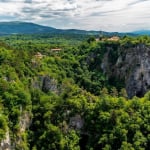
Introducing All 5 World Heritage Sites in Slovenia! Explore the Magnificent World Heritage of This Small Country
-
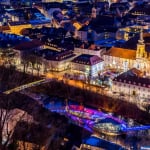
Austria’s Proud World Heritage Site! The Historic Centre of Graz and Eggenberg Palace
-

What is code sharing (joint operation), a term often heard when flying? Use it smartly to get cheap tickets!
-
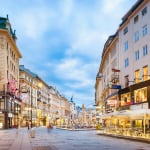
A Land of Art and Culture! Discover 8 Must-Visit Attractions in Enchanting Austria
-
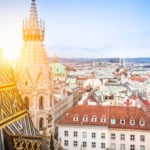
Searching for souvenirs in historic Austria! 5 recommended shopping spots
MOST POPULAR ON Austria
-
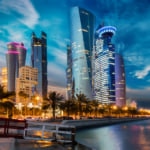 1
1Doha: Must-see Attractions in the Capital of Qatar
-
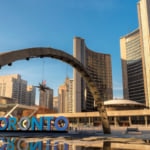 2
2Toronto: 10 Things to do in this Picturesque Canadian City
-
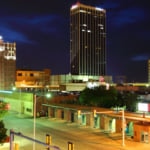 3
3Amarillo: A City Famous for It’s Amazing Canyons, Great History and Music
-
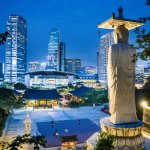 4
4South Korea: Dazzling Scenery, Rich Culture and Fascinating History
-
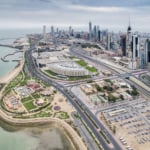 5
5Kuwait: A Country in Middle East Asia Famous for Hot Sand Dunes and Stunning Cityscape



